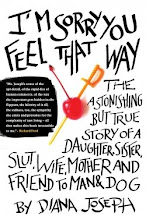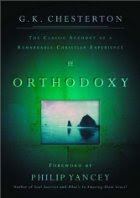Flannery O'Connor's Mystery & Manners:
"The novelist must be characterized not by his function but by his vision, and we must remember that his vision has to be transmitted and that the limitations and blind spots of his audience will very definitely affect the way he is able to show what he sees." (47)
"The type of mind that can understand good fiction is not necessarily the educated mind, but it is at all times the kind of mind that is willing to have its sense of mystery deepened by contact with reality, and its sense of reality deepened by contact with mystery." (79)
"The writer has to judge himself with a stranger’s eye and a stranger’s severity. The prophet in him has to see the freak. No art is sunk in the self, but rather, in art the self becomes self-forgetful in order to meet the demands of the thing seen and the thing being made." (81-82)
"For him [the artist], to be reasonable is to find, in the object, in the situation, in the sequence, the spirit which makes it itself. This is not an easy or simple thing to do. It is to intrude upon the timeless, and that is only done by the violence of a single-minded respect for the truth." (82-83)
"The fact is that anybody who has survived his childhood has enough information about life to last him the rest of his days. If you can’t make something out of a little experience, you probably won’t be able to make it out of a lot. The writer’s business is to contemplate experience, not to be merged with it." (84)
"...sentimentality is an excess, a distortion of sentiment usually in the direction of an overemphasis on innocence, and that innocence, whenever it is overemphasized in the ordinary human condition, tends by some natural law to become its opposite." (147-148)
"Pornography, on the other hand, is essentially sentimental, for it leaves out the connection of sex with its hard purpose, and so far disconnects it from its meaning in life as to make it simply an experience for its own sake." (148)
Deleuze & Guattari's Anti-Oedipus:
". . . the human essence of nature and the natural essence of man become one within nature in the form of production or industry, just as they do within the life of man as a species . . . man and nature are not like two opposite terms confronting each other––not even in the sense of bipolar opposites within a relationship of causation, ideation, or expression (cause and effect, subject and object, etc.); rather, they are one and the same essential reality, the producer-product." (4-5)
"[Process] must not be viewed as a goal or an end in itself, nor must it be confused with an infinite perpetuation of itself. Putting an end to the process or prolonging it indefinitely––which, strictly speaking, is tantamount to ending it abruptly and prematurely––it what creates the artificial schizophrenic found in mental institutions: a limp rag forced into autistic behavior, produced as an entirely separate and independent entity." (5)
". . . when the theoretician reduces desiring-production to a production of fantasy, he is content to exploit to the fullest the idealist principle that defines desire as a lack, rather than a process of production, of "industrial" production. . . . If desire produces, its product is real. If desire is productive, it can be productive only in the real world and can produce only reality. . . . Desire does not lack anything; it does not lack its object. It is, rather, the subject that is missing in desire, or desire that lacks a fixed subject; there is no fixed subject unless there is repression. Desire and its object are one and the same thing." (26-27)
"The artist is the master of objects; he puts before us shattered, burned, broken-down objects, converting them to the régime of desiring-machines; the artist presents paranoiac machines, miraculating-machines, and celibate machines as so many technical machines, so as to cause desiring-machines to undermine technical machines. Even more important, the work of art itself is a desiring-machine. The artist stores up his treasures so as to create an immediate explosion, and that is why, to his way of thinking, destructions can never take place as rapidly as they ought to." (32)
"That is what style is, or rather the absence of style––asyntactic, agrammatical: the moment when language is no longer defined by what it says, even less by what makes it a signifying thing, but by what causes it to move, to flow, to explode––desire. For literature is like schizophrenia: a process and not a goal, a production and not an expression." (133)
"There is no longer any need for applying psychoanalysis to the work of art, since the work itself constitutes a successful psychoanalysis, a sublime 'transference' with exemplary collective virtualities." (134)
"The unconscious does not speak, it engineers. It is not expressive or representative, but productive." (180)
Ron Carlson's Ron Carlson Writes a Story:
"Vision, of course, is not teachable. What a person chooses to write about is not teachable. The passion a writer brings to the page is not teachable." (3)
"The process of writing a story, as opposed to writing a letter, or a research paper, or even a novel, is a process involving radical, substance-changing discovery. . . . I’ve also become convinced that a writer’s confidence in his/her process is as important as any accumulated craft dexterity or writing ‘skill.’" (4)
"How can you know what you know until you write it?" (10)
"Since I don’t know where I’m going, why would I hurry?" (41)
"Do we want a story to go elsewhere? Absolutely: elsewhere is our destination. We want the story to be true. We don’t want it to have a point, theme, doctrine. If we write the story well, those things will emerge--we can’t prevent it." (50)
"The single largest advantage a veteran writer has over the beginner is this tolerance for not knowing. It’s not style, skill, or any other dexterity. An experienced writer has been in those woods before and is willing to be lost; she knows that being lost is necessary for the discoveries to come. The seasoned writer waits, is patient, listens to her story as it talks to her." (15)
"We’re looking for the small acts that reveal character." (36)
"The assumption on the part of any writer that she is writing about people we all know (without explanation) is a useful one. It’s called not underestimating your audience; readers are terribly smart. It’s a relief and allows us to leave things out." (62)
My Own: Carlson’s "lost and loving it" metaphors are apt. One cannot experience mystery without being lost. Though I still think that typing out a first draft is risky, given the speed at which I type. By hand, however, a kind of patience takes over the writing process. Patient writing is obvious when you encounter it. Perhaps patience, stillness, and silence are things that should be presented repeatedly to undergraduate writers. Perhaps, also, undergraduate writers should have to experience the act of writing a story entirely by hand, so long as they are not physically incapable of doing so. [Right. Maybe I can teach Maude and Toby to square dance.]
Other (my own reflections):
Writing a story is not achieved by active, conscious manipulation of elements of the text. Rather, "trusting myself," as the metaphysical advice goes, means allowing the details of the story to come naturally without thinking about them. Do not go back and try to rewrite what you have written. Do not go back and try to connect the dots from point A to point B to C to D to E and so forth. Do not rely on theories, sociological, literary, political, theological, or otherwise to help you write the story. Do not rush through the writing of a story. By doing any of those things, a story cannot happen. A story cannot be crafted with craft alone. The story must take its shape first, be crafted second.
The Connect-the-dots writing process is similar to an inexperienced writer's effort to work overtly with symbol: it doesn't work. Connect-the-dots cannot happen in a character-driven story. The characters themselves make all the connections; the writer has to listen to the characters, not connect things. Characters in a story are real; the world in a story is real; the emotions, the objects, the words in a story are real. Characters have real motives and real agendas. Characters experience real emotions, real joys and real sorrows, real pain and real remorse. The reality of a narrative world and the characters who exist therein cannot be compromised. In this vein, I think that John Gardner’s "Vivid and continuous dream" is a metaphor that tries to explain the mystery, but lacks. Indeed, a dream seems very much like a story. But we wake up from dreams. Often, the narrative structure of a dream makes little sense. Listening to another person tell about a dream he had the other night can sometimes be an act of enormous patience. The narrative of a dream is full of holes and gaps, unexplainable things, unbelievable things. Stories are more than mere dreams. One's actual life is vivid and continuous, dreams can only seem that way.
Think of "trust" as an intransitive verb.
The reality of a story contains one kernel of absolute truth that is what the story is. The closest that a writer can approach to a story’s absolute truth is merely the best that the writer can do.
2008/08/23
Subscribe to:
Post Comments (Atom)
A Slowly Growing List of Things to Look Forward To When You Have a Child
- Every day is either Christmas or Halloween or Birthday or Easter
- Leave those cats alone! They're going to scratch you and it will hurt
- You cannot lie under circumstances, but nor can you tell the literal truth
- Geez that kid is sharp
- Can I have cake? Can I have cake? Can I have cake? Huh? Daddy? Can I have cake?
- For the last time, stop asking me!
- Noticing the growth: taller and a bit heavier to carry
- Children's television shows
- Food. Wasted food
- Remembering that you once acted this way yourself
- Watching where the both of you are going
- The joy of hearing the word "fuck" being used experimentally, and justifying this experimentation by saying "Well they learn it eventually"
- TANTRUMS
- Sitting down together on the living room floor, a mess of blocks & cars & plush Care Bears strewn around you, discussing the complexities of each car's identity, its name, and why it is so humorous
- Having to take responsibility for someone else for a change
- More frustration than you're prepared for
- Wicked cackling
- Drawings of potato guys
- Learning about the world all over again
- Circular Logic
- Unexpected hugs and words put beautifully together out of context
- Waking up after 4 hours of sleep, and unexpectedly having to confront shit, in more than one place, including the carpet, a big toe, a butt, a bed, a toilet seat, and underpants




No comments:
Post a Comment